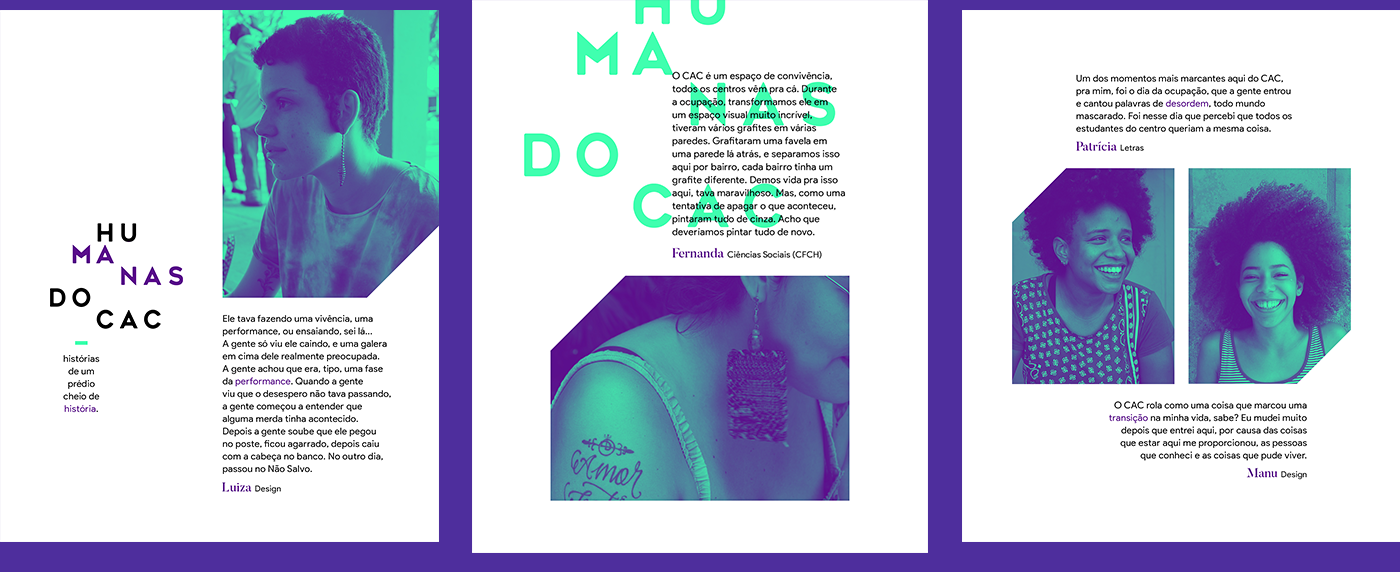March 31, 2017
SXSW Alumni Film Releases – April 2017
Discover some of the SXSW alumni films on release this month, such as COLOSSAL, DAVID LYNCH: THE ART LIFE, and FREE FIRE. Continue on for a complete list with trailers and more info.

ACCIDENTAL COURTESY: DARYL DAVIS, RACE AND AMERICA
Documentary Feature, World Premiere, 2016
Website | Trailer
Idiosyncratic and provocative, protagonist Daryl Davis offers a conduit to difficult, nuanced questions about race in fragile society seeking answers more urgently than ever.
Now on Netflix
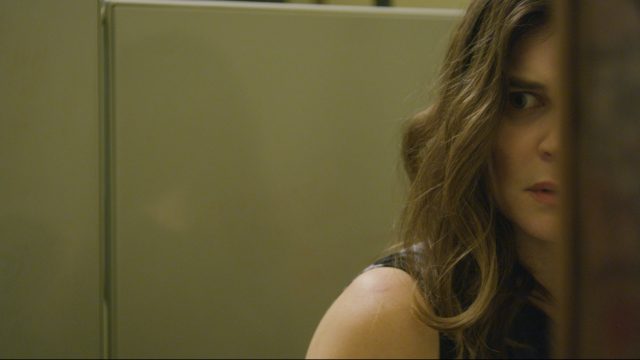
CLAIRE IN MOTION
Narrative Feature, World Premiere, 2016
Website | Trailer
A delicate, enigmatic performance from Breaking Bad’s Betsy Brandt anchors this poignant mystery that gradually reveals a world of devastating secrets.
Blu-ray/DVD available April 11
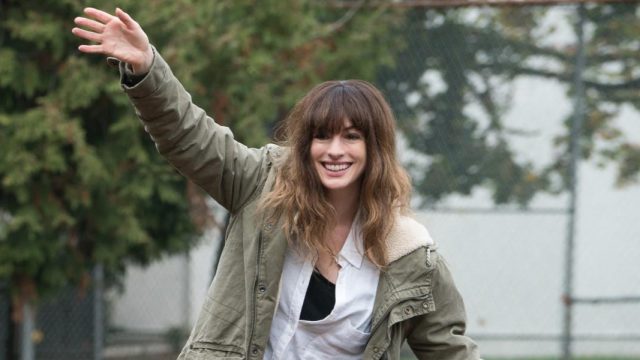
COLOSSAL
Narrative Feature, 2017
Website | Trailer
Anne Hathaway stars with Jason Sudeikis in one hell of a riff on the Godzilla-style monster-movie, directed by cult favorite Nacho Vigalondo.
In Theaters April 7

DAVID LYNCH: THE ART LIFE
Documentary Feature, 2017
Website | Trailer
A rare, intimate look at the creative process of cult filmmaker and painter David Lynch, revealing as much about the man as it does about his artistic output.
In Theaters March 31
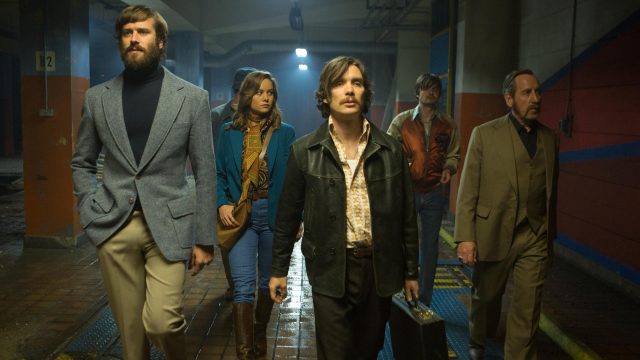
FREE FIRE
Narrative Feature, US Premiere, 2016
Website | Trailer
Pithy one-liners fly as fast as the bullets in Ben Wheatley’s grand guignol-meets-Peckinpah opus, Free Fire.
In Theaters April 21
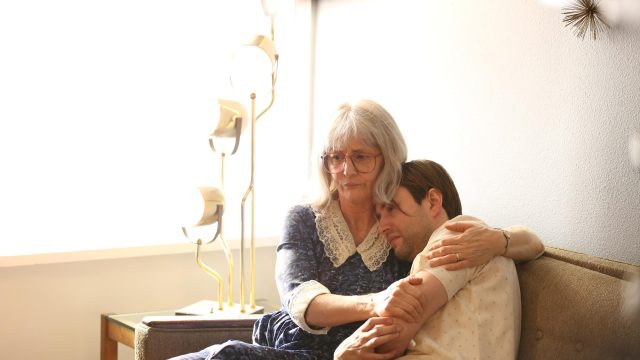
THE MOST HATED WOMAN IN AMERICA
Narrative Feature, World Premiere, 2017
Website | Trailer
Melissa Leo adds another powerhouse performance to her resume in this Austin-set biopic made all the more potent by the fact that it’s based on a true story.
Now on Netlix

NEWTOWN
2016
Website | Trailer
A film that we shouldn’t need, but one that couldn’t be more timely. Newtown is a sensitive, and devastating snapshot of the complex relationship between Americans and guns.
DVD Available April 4

PUNCHING HENRY (previously AND PUNCHING THE CLOWN)
Documentary Feature, 2016
Website | Trailer
A darkly comic, semi-autobiographical trip into the mind of hapless comedy chancer Henry Phillips.
Blu-ray/DVD available April 18

T2: TRAINSPOTTING
Documentary Feature, 2016
Website | Trailer
Danny Boyle revisits with a long awaited sequel to perhaps his most beloved film, still as anarchic and wildly inventive as ever.
Now in Theaters

WAR ON EVERYONE
Narrative Feature, North American Premiere, 2016
Website | Trailer
Violent, profane, offensive, and wholly irresponsible…War on Everyone is a blast.
Blu-ray/DVD available April 11

WE ARE X
Documentary Feature, 2016
Website | Trailer
A technicolor journey into the world of X Japan frontman Yoshiki as he emerges from an almost implausible string of personal tragedies to bring his iconic band back to the limelight.
Blu-ray/DVD Available April 25
The post SXSW Alumni Film Releases – April 2017 appeared first on SXSW.
Source: SxSW Film
March 31, 2017
Tutorial: How to Create a Double Exposure Portrait with Photoshop
Tutorial: How to Create a Double Exposure Portrait with Photoshop
Today we would like to share this tutorial from our friends from Adobe Photoshop in collaboration with image creator Ted Chin released exclusively for their Instagram channel. You’ll be able to learn how to create a Double Exposure Portrait with Photoshop. I know we don’t usually share tutorials on Friday but why not! Carefully follow these steps with your own images and create your own experiments. Enjoy!
This tutorial is by Ted Chin who is an artist/image creator based in San Francisco, USA. You should definitely check out his site for tutorials and make sure to follow him on Instagram.
Crafting what I believe is creative, I use photography and modern technology to manipulate it. I am able to recreate what I imagine.
Result
Step 1
Hey guys! It’s Ted (@eye.c) here. Today I’m going to show you how to create a double exposure portrait in just few simple steps.
Step 2-3
Using photos with simple backgrounds will help with the masking process. First, open the portrait (base) photo in #Photoshop. We are going to mask the background out and create the double exposure effect with the shape of the model.
Step 4
Use the magic wand tool (W), click and select the background. Go to Select -> hold the “shift” key and click “Select and Mask”. Smooth the edge with the “Refine Edge Tool”, then click ok.
Step 5
Click on “Add a mask” then, “Create a new layer.” Move the new layer to the bottom of the portrait. Select the “Paint Bucket Tool”, or press “G”, and fill in the white background.
Step 6
Paste the second image, and adjust the image with “Levels” (Ctrl + L). Make sure the adjustment layer is clipped to the second image only. We want to make sure the sky is bright/clean enough so it’s easier for selection. Hold (Ctrl + left click) on the portrait’s mask we created earlier, then create a new layer mask for the landscape photo.
Step 7
Un-link the mask by clicking the symbol in between, and re-adjust the landscape photo to the way you prefer.
Step 8
Duplicate the Portrait layer and move the copy to the top of the landscape layer. Then change the blending mode to “Lighten”.
Step 9
I decided to add other elements (flowers) by using the same blending mode (Lighten) from the last step.
Step 10
If you think the white background is too boring, you can try to add a different background, too. And this is how you can create a simple double exposure portrait!
#abduzeedo
AoiroStudio
Mar 31, 2017
Source: Abduzeedo Tutorials
March 31, 2017
Watch: How Soviet Cinema Gave the Movie Camera its Eyes
Film school in video essay form.
[Editor’s Note: The following introduction was written by Max Winter.]
When Brian De Palma’s The Untouchables came out in the mid-1980s, the scene film buffs focused on took place in Union Station, Chicago, in which a brutal shootout between Al Capone’s mob and the FBI takes place as a baby carriage slowly bumpity-bumps down the staircase, only to be caught in the end. It’s a great piece of filmmaking—probably one of De Palma’s best—but it is also directly lifted from one of the most famous scenes in film history: the baby carriage scene from Sergei Eisenstein’s Battleship Potemkin.
This film was one of the cornerstones of the film movement known as Soviet formalism, covered with great agility in this video essay by Tyler Knudsen.
Knudsen’s piece shows us the whole arc of the movement, its beginnings preceded by the rapid-fire growth of the movie industry in Russian in the early 20th century, which would lead to the development of Mosfilm, one of the largest movie studios in Russian film history.
Source: NoFilmSchool
March 31, 2017
Filmmaker in Focus Series: Grand Jury Winners
Ever wonder how a filmmaker comes up with a story? Their motivation? Over the past several months SXSW has reached out to several filmmakers and asked questions about the stories behind the stories. With our Filmmaker in Focus blog series we will feature directors from our 2017 film festival lineup.
First up, interviews with our SXSW Grand Jury winners, Ana Asensio for Most Beautiful Island (Narrative) and Jairus McLeary for The Work (Documentary).
Most Beautiful Island

Q: Tell us a little about your film?
A: “Most Beautiful Island was inspired by my own life experiences, and the challenges I encountered when I first arrived to New York City. It’s a very personal film for me and I wanted it to feel intimate, immediate, and a little gritty, so we shot in mostly handheld on Super 16mm.”
Q: What motivated you to tell this story?
A: “I wanted to tell a different immigrant story – the story of women coming to New York City hoping to start a new life, or follow a dream. Of women not escaping poverty, but rather educated, accomplished women risking a more secure life at home for a difficult, unpredictable, and possibly dangerous life in New York City with no family and no safety net. We often don’t think of these individuals as “immigrants” since they don’t take on the typical jobs that we associate with that term, however, they do live in vulnerable situations. Why would they choose to go through struggles in New York City when they don’t “need to?” I wanted to look at a day in the life of one of these women and examine the challenges and opportunities she encounters.”
Q:What is your spirt animal?
A:“NYC subway rats.”
The Work

Q: Tell us a little about your film?
A: “The film follows three men from the outside as they experience four days with the inmates of a level-4, maximum security prison. What began in Folsom State Prison is something akin to a group therapy circle nearly twenty years ago with a handful of convicts and concerned citizens from the outside, has become a one of a kind rehabilitation program jointly operated by private citizens and the convicts themselves with permission from the prison administration. Shot inside a single cinderblock room over the course of one of the program’s biannual, four day long events, the obvious differences between the convicted men and the three men from the outside begin to disintegrate as each man comes to find a deeper understanding of himself, collective realizations that may challenge our ideas of social identity, incarceration and rehabilitation.”
Q: What motivated you to tell this story?
A: “I was among the group of civilian volunteers who were invited to the very first 4-day event inside Folsom State Prison in 2000. My father was one of the guys that was recruited to come in from the outside and he invited me. Although I trusted him implicitly, the weight of what I didn’t know about the inside of a maximum security prison made me say no. It wasn’t until the third time he asked me that I said yes. By that time I’d confronted the reality that I’d just been unconsciously filling the vacuum of my own ignorance with fiction gleaned from movies and television, and I realized that it was my obligation to fill it with objective fact. Afterwards I was floored and that feeling never went away no matter how many times I went back. For the convicts who lived there, their commitment to honesty could well result in their own death once a session was over and indeed did. Their willingness to lay bare their emotions was truly a matter of life and death. That intensity spread to the rest of the room that inside or outside became irrelevant and the heart of what was at stake was the personal integrity of the rest of your life. Over the years my brothers, my father and I returned, and I was continually shocked by the level of insight I gained about myself alongside men that were more than what I had initially judged they were. I came to understood that my judgments were a uninformed a choice I’d made. At first that choice embarrassed me, but as time went on, I understood that it was one that that every man in that room, both free and incarcerated admitted to making about each other at some point. So after I got involved in filmmaking, there simply came a time where I had to at least try to tell this story, this story of people who were trying to do something together that changed the way they saw one another and in so doing, were able to change their behavior. We were fortunate enough that the men trusted us so that when they were ready to tell their story we were able to find the right people to help do that.”
Q:What is your spirt animal?
A:“Man. Over the years I’ve found myself at different kinds of events and been inspired by indigenous rituals that draws on some of those inner archetypes… But lately, I feel like Hannibal Buress is my spirit animal. Maybe that’s just wishful thinking.”
Explore More Content From SXSW 2017
Get inspired by a multitude of diverse visionaries at SXSW – browse more 2017 Keynotes, Featured Sessions, Red Carpets, and Q&A’s on our YouTube Channel.
Follow us on Facebook, Twitter, Instagram, and SXSW News for the latest SXSW coverage, recaps, late-breaking announcements, and updates.
The post Filmmaker in Focus Series: Grand Jury Winners appeared first on SXSW.
Source: SxSW Film
March 31, 2017
The Daily Chord Weekly Recap – Friday, March 31

The big story in music this week was the 11% sales jump in US revenue as reported by the RIAA. The Daily Chord shared the news from a few perspectives. The state of Bob Seger’s catalog was given a close examination, Bob Dylan agreed to accept his Nobel Prize and Pitchfork listed the Britpop canon. The Daily Chord keeps tabs on the music biz and shares links each weekday via our posts and email blasts. Sign up today for the newsletter.
Tuesday, March 28
-
Streaming music services, from most screwed to least screwed
Post from Gizmodo -
John Lydon, angry older man, reflects on life as an angry young man
Post from NY Times -
Ultra nice – arrests and medical calls way down at this year’s Ultra Music Festival
Story from Miami Herald -
‘I crawled on my knees to Kylie’ – The inside story of Stock, Aitken and Waterman
Story from The Guardian -
Danzig announces Blackest Of The Black festival, complete with an immersive torture experience
Post from Consequence Of Sound -
Houston loses another piece of music history, the Bronze Peacock
Story from Houston Chronicle
Wednesday, March 29
-
Watch what happens when Spotify gives unknown music acts a big push
Post from Recode -
Projecting trends: The music industry’s quest for consumer data
Post from Synchtank -
N.W.A.’s ‘Straight Outta Compton,’ Eagles ‘Greatest Hits’ make Library Of Congress’ 2016 picks
Story from LA Times -
Bob Dylan finally agrees to accept Nobel Prize for literature
Item from BBC News -
Slacker Radio’s new feature goes old-school
Post from CNET -
Emoticast raises $5 million as Sean Parker, will.i.am, David Guetta back mobile music messenger
Item from Hypebot
Thursday, March 30
-
Where have all the Bob Seger albums gone?
Story from NPR Music -
Arthur Blythe, jazz saxophonist who mixed sultry and strident, dies at 76
Obituary from NY Times -
Classic West rock fest announces lineup and ticket prices (and no, they’re not exactly cheap)
Post from LA Times -
Questlove and the art of the subversive musical dig
Post from Wired -
The 50 best Britpop albums
Feature from Pitchfork -
Gin Blossoms’ ‘New Miserable Experience’: The dark history of a nineties classic
Story from Rolling Stone
Friday, March 31
-
Streaming drives U.S. music sales up 11% in 2016
Story from NY Times -
2016: A year of progress for music
Post by RIAA via Medium -
Streaming makes most of the US music industry’s money now
Post from CNET -
Jarvis Cocker on the music of his life
Feature from Pitchfork -
When bygone pop stars attempt an indie reboot
Post from Stereogum -
Rihanna’s ‘Umbrella’ turns 10: How the iconic hit changed her forever
Post from MTV News
The post The Daily Chord Weekly Recap – Friday, March 31 appeared first on SXSW.
Source: SxSW Music
March 31, 2017
A Look At The Network Of The Global News Landscape
The digital age has helped to transform the way people receive their daily news and how stories spread. When print was the main method for delivering news, publications would credit the originating outlet with a little blurb like “as stated in The Wall Street Journal.” Digital news stories, however, generally include a hyperlink to the initial story and sometimes links to competing outlets that covered the current story in more detail. This linking creates a web of interconnected global news that allows researchers to understand news outlets and the bodies that direct global news.
The GDELT Project, an open global database of society by Google Jigsaw, monitors global broadcasts, print, and online news from every country in more than 100 languages. What they’re doing is identifying what drives our global society by looking at the people, locations, organizations, quotes, images, themes, and events happening every second of the day. The goal is to create a free open platform for analyzing the entire world.
The project is explained as so:
“The GDELT Project is an initiative to construct a catalog of human societal-scale behavior and beliefs across all countries of the world, connecting every person, organization, location, count, theme, news source, and event across the planet into a single massive network that captures what’s happening around the world, what its context is and who’s involved, and how the world is feeling about it, every single day.”
Last April, GDELT began to document a list of all the hyperlinks it could find in the body of every online article while ignoring extraneous links found on the page in the headers, footers, navigation, and the like. This allowed them to analyze article linking procedures and form a link graph depicting how each news site is connected to the sites its articles linked to.
GDELT looked at 121 million online articles containing hyperlinks in the article body over a 10 month period. Altogether, the articles contained 727,275917 links and culminated in 13,380,807 different couplings, meaning one site had one or more links to another. Although no system can survey every daily online news coverage in the world, it is possible to look at a significant sample from close to every country in the world.
Exploring the online news network allows researchers to look at the global news landscape on a macro-level. This creates a better understanding of the linking structure in the online news community. In order to focus on this network, GDELT filtered the 727 million outlinks to narrow their analysis to links that were also monitored by Google News over the same 10-month period.
The resulting visualization of their analysis shows 10,000 of the most substantial connections between news outlets. Each outlet is represented by a node with the lines between each node representing pairs of outlets that frequently link to each other. Outlets that linked to each other more regularly than to others are grouped together and tagged in the same color. Larger nodes were assigned to news outlets with a higher PageRank, meaning they are considered more “globally important” than other outlets.
From the graph, it can easily be seen that high-PageRank outlets—the “global media core”—are exceedingly interlinked, meaning they regularly cite each other more rather than linking to smaller local outlets. At the same time, the small outlets tend to link to major outlets rather than to other small outlets.
You can click on the image for the full resolution version or check out the interactive. Also be sure to check out the project page for more information.
[Via: Forbes]
Source: Visual News
March 31, 2017
How to Plan Your Live Video Storytelling Strategy
The live streaming market worldwide is projected to grow from $30.29 Billion in 2016 to $70.05 Billion by 2021
(source: Markets and Markets)
With so much noise out there, one of the most effective ways to break through is live video storytelling. I refer to the wide range of live video expressions from social live video, video conferencing, to live events. In this post, I am not talking about Webinars but any live video show with live talking heads indoors or outdoors, private or public.
Why? Simply because you got nowhere to hide!
Through all of these use cases, your authentic personality comes out with no filters or funny handle nicknames to hide behind. It’s the closest thing to meeting you in person and forming an accurate impression. True, you can apply editing or lighting acrobatics, but at the end of the day, people form their first impression on the first few seconds of viewing.
It’s your appearance, voice, outfit, location and delivery style that cause your audience’s “storytelling mind” to form an instant story about what they see. That story is typically comprised of subjective meanings that each viewer pulls from their own personal baggage of past experiences/beliefs, and a sprinkle of objective meanings – norms – that will most likely are perceived the same across a specific audience segment.
Getting started
So if you’re working on building your audience either running the show for your startup or as part of a marketing team, you may want to think about your live video strategy. You start by pulling together the narrative pieces: Setup, conflict, and resolution that you’ll leverage through your live video program.
Identifying your goals (aka setup)
Like any other campaign you drive, you need to define your business goals. What are you trying to accomplish? Create a program to drive brand awareness, lead generation, establish strategic partnerships, improve customer service, indirectly boost sales? These are all valid goals. Select the one with the highest business priority and assign quantified success targets.
Establishing your audience wants (aka conflict)
A good place to start is by analyzing your audience wants – establishing the conflict your live video program will focus on. These days, your audience leaves tracks and signals all over the place for you to pick up; from the keywords they used to land on your Website, your most visited pages, popular hashtags on social, hot topics they discuss on their favorite platform/s, related news in your industry, hot topics your competitors are pushing out and stories customers share with your sales and customer service teams. For large and enterprise levels companies, you most likely have a research team, so all the above and more should be part of their mandate
It’s a good idea to run an audience audit with variant levels of depth for each of your top 3 buyer persona segments weekly, monthly, and quarterly. This intel will serve you as a “grand GPS” to direct all your storytelling activities across channels.
Aligning audience wants with your company’s solution (aka resolution)
Once you know what are the top pain points (negative) or brag points (positive) your audience cares about the most, start exploring what would be the strategic BIG STORY you want your program to achieve. This BIG STORY should align your audience problem with your company’s mission and resolution (i.e., products/services).
Define your video delivery experience
Next, it’s time to explore your live video delivery experience that would make sense. If your company plans to roll out offline events in the near future, see if you can live-stream them and include either core content or extra guests that will talk about your audience problem.
Video of a live event increases brand favorability by 63%
(source: Twitter)
Another option, still under the events category, is to create a recurring live video show where you can interview experts discussing your audience problem and showcase examples.
Both options should include a signup form for lead generation and Q&A mechanism for pre and during show engagement.
Depending on your product and your audience core hangouts, with the advent of live social video like Facebook Live, Periscope, YouTube Live, and as of recent Snapchat spectacles – you can also create a live video show around your audience. Better yet, you may want to identify your brand top influencers and get them to play a specific role in your show.
People spend, on average, more than 3x more time watching a Facebook Live video than a video that’s no longer live
(source: Facebook)
For offline businesses, that’s super easy just come up with a core show theme and interview your customers at the store, down the street – in “their natural habitat.” They’ll share ideas, rants and humanize your brand in the process. For online businesses, you can invite them to meet you at a certain place at a certain time and create a local buzz with the extra help of your business partners.
The above strategy is also very effective when featuring your employees talking about different aspects of your product/service and giving your audience an authentic backstage view.
With mobile live social video, marketers today have an amazing opportunity to storytell their BIG STORY outside the office, on-location, unscripted, unedited with real people and real stories. This level of narrative transparency, allows the good and the bad to organically surface and this way elevate empathy and trust to your brand.
Your live video program will also generate a ton of content you can repurpose; from pre-show blog posts, visual memes, bite-size quotes after the show and show notes archive.
And final words…
As a brand story maker, it’s all about creating a meaningful experience for your audience that:
Thematically addresses their problem
Gives them an active role in your show, through Q&A or guest appearance;
Makes them coming back for more by constantly adding value;
And in the process, transforms them into your revved up storytellers on your behalf.
Need help optimizing your BIG STORY to rise above the noise?
Hey, we’re just a call away: Schedule a conversation
Source: Visual Storytelling
March 30, 2017
Virtual reality pioneer Palmer Luckey departs Facebook in wake of controversies
Palmer Luckey, the mind behind the Oculus Rift, will leave Facebook at the end of the week. It’s unclear if he resigned on his own terms, but his departure comes two months after the high-profile Zenimax lawsuit.
The post Virtual reality pioneer Palmer Luckey departs Facebook in wake of controversies appeared first on Digital Trends.
Source: Digital Trends VR
March 30, 2017
Microsoft celebrates its mixed reality successes on HoloLens’ first bithday
Along with simply getting excited about HoloLens being around for another year, Microsoft also took the opportunity to highlight some of the platform’s accomplishments over the last 12 months.
The post Microsoft celebrates its mixed reality successes on HoloLens' first bithday appeared first on Digital Trends.
Source: Digital Trends VR
March 30, 2017
Graphic Design and Editorial: Drope
Graphic Design and Editorial: Drope
We love student projects on Abduzeedo and this one involves graphic design, editorial and photography by Marcelo Rodrigues and André de Lima. I loved their choice of font for the project and the approach of the dualtone is just so attractive. Give it a look! Congrats to both of them of making up something great and put it online.
Published on Behance is the work from Marcelo Rodrigues and André de Lima who are both students in design currently based Recife, Brazil. Gotta love how they are exploring different styles, we’ll look forward to see more of them in the future.
Credits
- Marcelo Rodrigues
- André de Lima
- Filipe Ventura
AoiroStudio
Mar 30, 2017
Source: Abduzeedo Editorial Design









